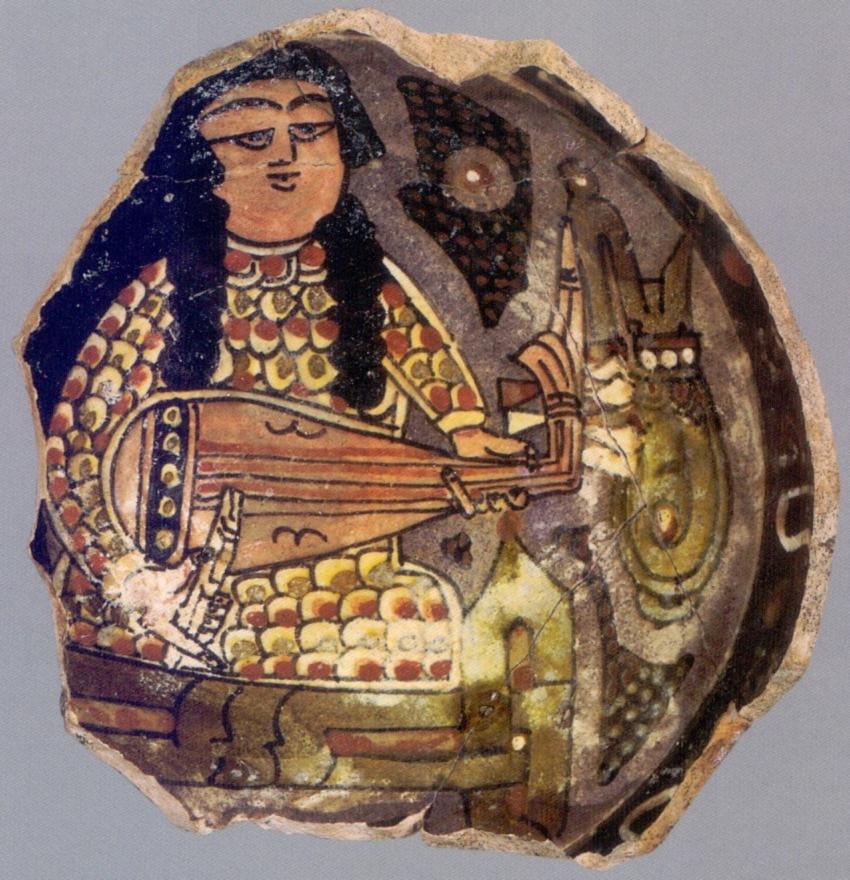Plate with depiction of a musician, 10th Century, Maimana, Afghanistan
The al-Sabah Collection, Dar al-Athar al-Islamiyyah, Kuwait National Museum
Catalog pp. 240-242, cat. Gf.1 Bowl fragment
earthenware, slip with polychrome slip decoration under a transparent glaze
Eastern Iranian world;
10th century
Dimensions: h. 6cm, w. 13.9 cm
LNS 791 C
Provenance: Reportedley from Maimana, Afghanistan.
A figure, with long tresses of hair and an ornately decorated garment sits cross legged on a stool:
she (we presume her to be female) plays a lute, holding the neck in her left hand, and strumming with a plectrum in her right.
An ewer, with jewelled collar and high handle stands to her left, small stippled contour panels fill the background, and part of an enclosing black band can be seen.
Though made in a completely conventional technique for eastern Iranian wares,
the design in both its subject matter and treatment puts this piece in a class by itself.
The earthenware body is covered with a white slip, and the design is painted with coloured slips under a transparent glaze.
The coloured slips include standard ones - white, black, red, olive green - but also an unprecedented pinkish flesh tone, and a most unusual purplish background colour.
The shape of the bowl is unusual too, with rounded walls, and a footing rather than the usual flat base.
Human figures are virtually unknown in eastern Iranian slipwares, except in buffwares (section H) or in the occasional copy of an Iraqi lustre,
see Watson (1985a; no. 212). Those copying lustre follow the stylizations of the originals, while the buff ware has a folksy stylization of its own.
Neither ware comes close to matching the sophistication of this sherd.
The al-Sabah Collection, Dar al-Athar al-Islamiyyah, Kuwait National Museum
Source: Oliver Watson, Ceramics from Islamic Lands
See also Bowls with figures from Nishapur, Kurasan, Iran, 9th-10th centuries, Saffarid-Samanid period
Other 10th Century Illustrations of Costume & Soldiers

